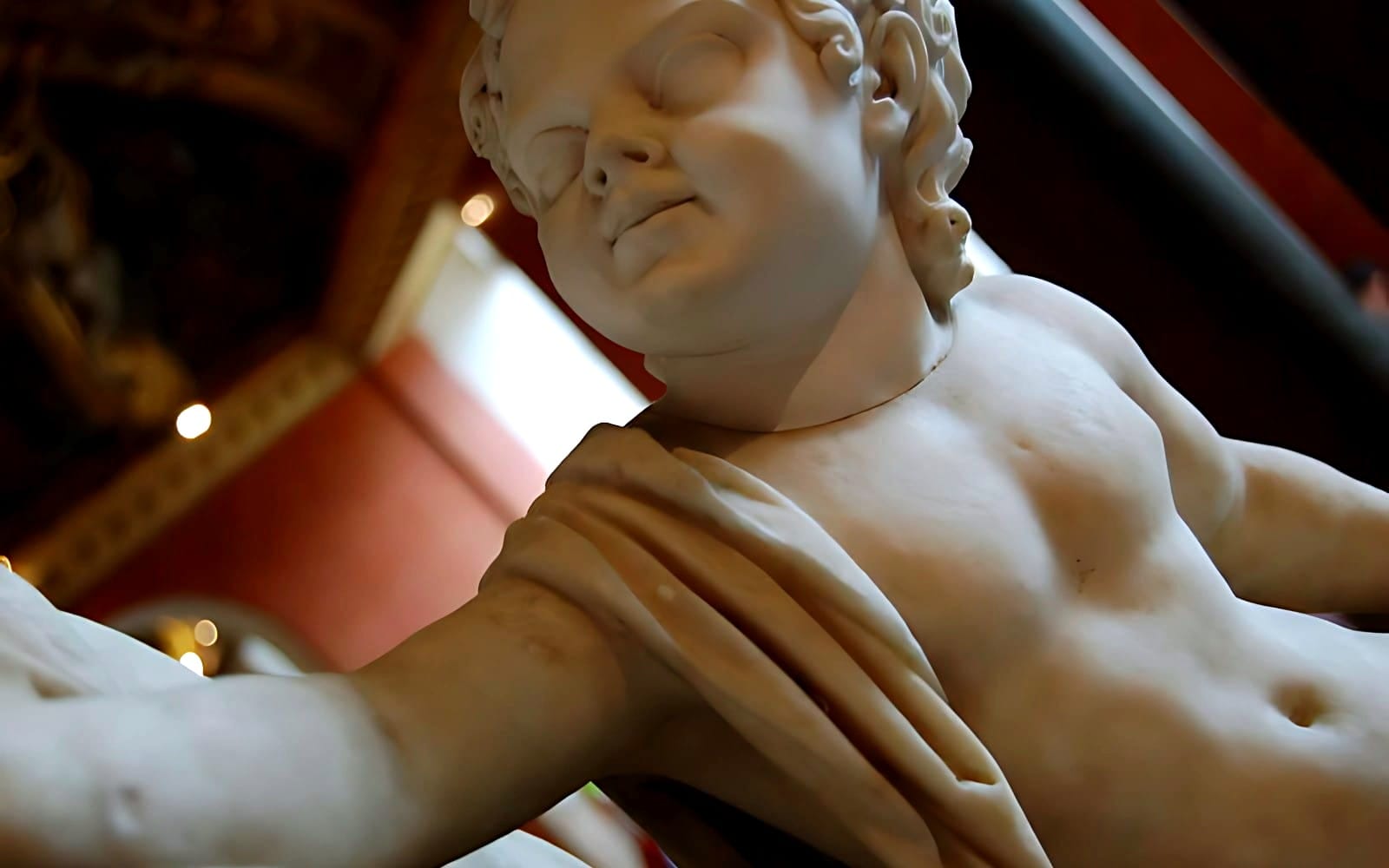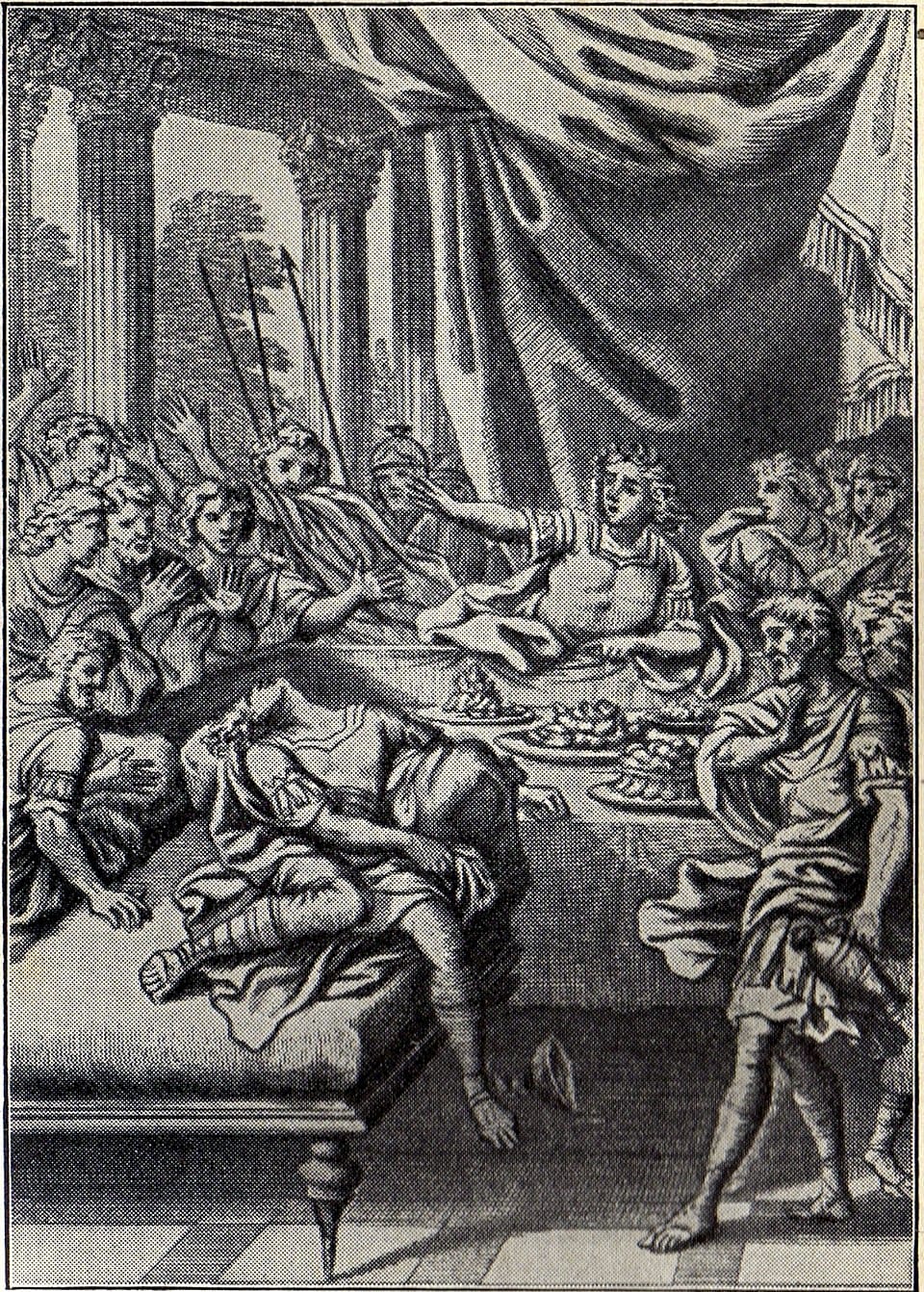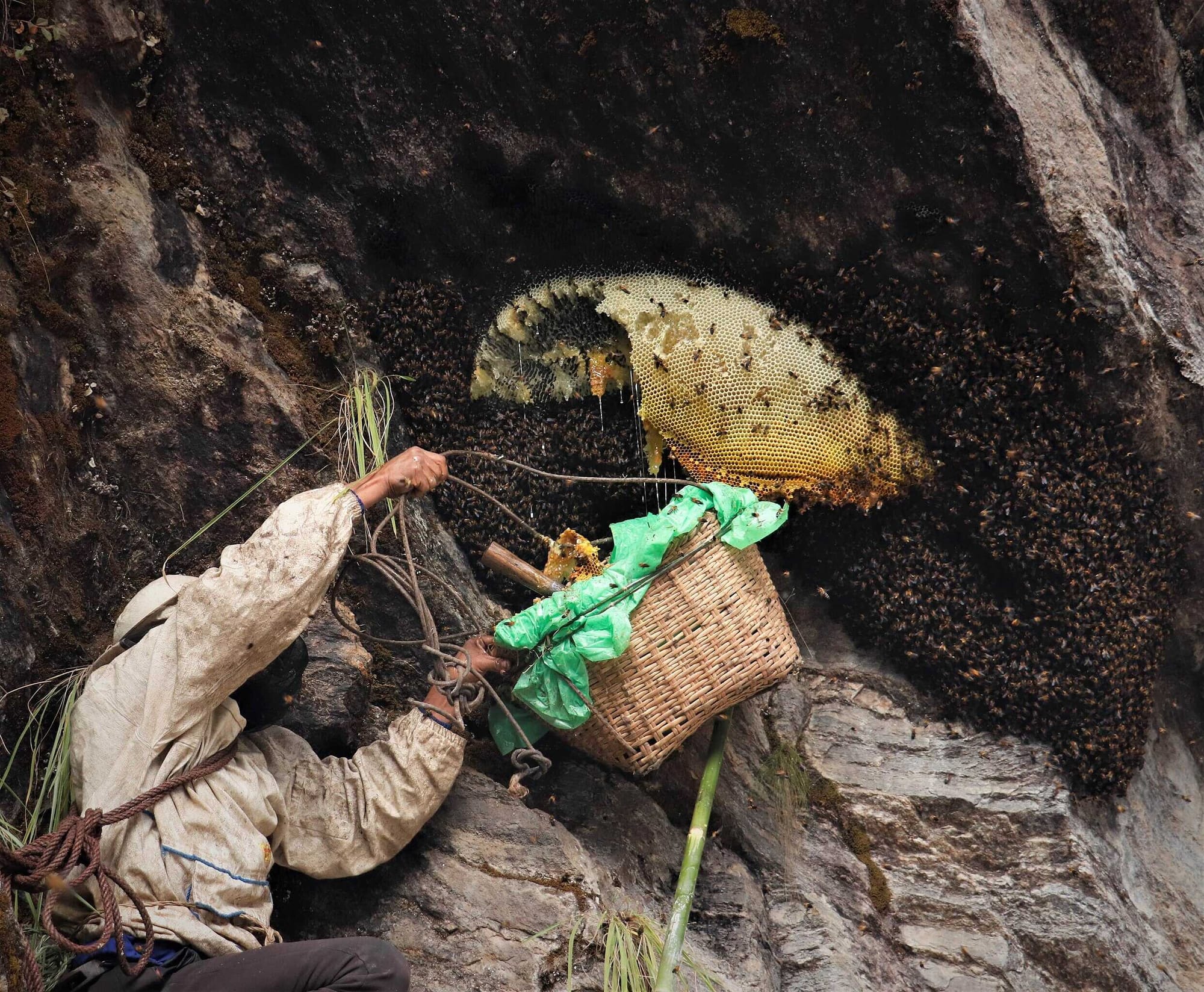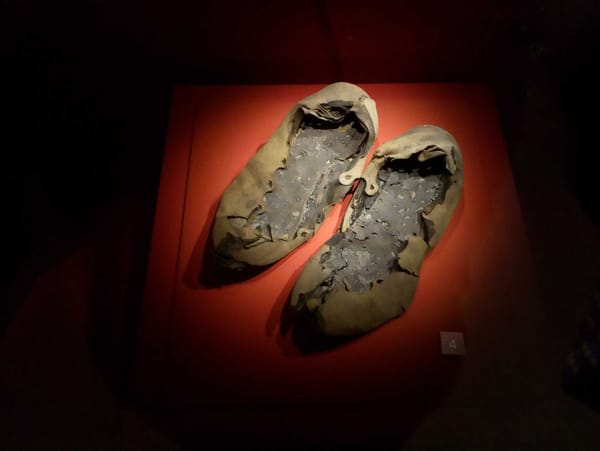The Art of Poison in the Roman Empire
Poison in Rome was more than murder—it was myth, medicine, and metaphor. From household betrayals to imperial plots, it blurred the line between cure and crime.

From the flick of a perfumed vial to the sprinkle of a deadly powder, poison haunted the corridors of Roman power like an invisible assassin. More than a tool of murder, it became a metaphor for corruption—quiet, insidious, and devastatingly effective. In a world where emperors feared their own physicians and women were suspected chemists of death, poison was both a weapon and a warning, binding medicine, myth, and political terror into a single, chilling art.
Plants, Poisons, and Roman Perceptions
Rooted in their agrarian lifestyle, the Romans developed an intricate understanding of plant life—both as sustenance and threat. This close relationship with the natural world meant they were attuned to the subtle boundary between healing and harming.
They knew that nature could provide nourishment, but also harbor potent agents of death. Across medical texts and natural histories, there runs a consistent theme: plants are powerful, unpredictable, and demand respect.
The language used to describe poisons reflects this ambivalence. Romans often blurred the line between medicine and toxin, viewing many substances as capable of both harm and healing depending on use and dose. This conceptual overlap explains why their terminology was imprecise—sometimes relying on context or tradition more than pharmacological accuracy.
Writers like Pliny the Elder and Dioscorides compiled vast lists of herbs and minerals that could kill or cure, and even early Roman law acknowledged the dangers of toxic substances, treating their misuse as a serious social threat.

Yet poison always retained an aura of secrecy—its use often associated with feminine cunning, foreign treachery, or magical manipulation.
This Roman perspective on poisoning was therefore not simply medical or legal—it was cultural. Poison sat at the intersection of nature and human intent, where fear, knowledge, and imagination converged.
A Toxic Legacy
In Roman antiquity, poison was not merely a tool of assassination—it was part of a broader cultural awareness of nature’s power to harm as well as heal. Pliny’s Natural History cataloged an astonishing range of substances deemed poisonous, from the infamous hemlock and aconite to more surprising sources like the blood of toads or the bile of wild animals. He wrote with both curiosity and alarm about the ease with which these agents could be transformed from medicine into murder.
The Roman attitude toward poison was shaped by their broader medical culture, in which many of the most toxic substances were also therapeutic in measured doses. This duality is reflected in the paradoxical role of the physician-poisoner—a figure who straddled the line between healer and potential assassin.
The pharmacological writings of Dioscorides, Galen, and Scribonius Largus likewise display an uneasy respect for toxic flora and fauna, simultaneously describing their lethal properties and therapeutic applications.
Roman authors also theorized about poison’s moral and social implications. The use of poison was often associated with cowardice, treachery, and unmanly conduct. Yet it was also widespread enough to suggest a grim practicality: it was a weapon in domestic conflicts, succession plots, and imperial power struggles. The line between natural knowledge and criminal intent was sometimes perilously thin.
Pliny, in particular, believed that poisons were often discovered by accident or desperation, writing that:
“it is through human misery that such knowledge was gained.”
This view cast poison not as a divine curse, but as the darker byproduct of human curiosity and suffering. (The role of poison in Roman society, by Cheryl L. Golden)
Poison and Political Anxiety in Early Imperial Rome
Compared to the Roman Republic, the early Imperial period witnessed a notable rise in recorded poisonings. Traditionally, scholars have emphasized the connection between women and poison—both as users and perpetrators.
Yet this association is problematic. Women were not the only ones to employ poison, and not all accounts of poisoning are historically credible. By interrogating the plausibility of these incidents, we may also question the motivations of ancient authors.
Scholars like Cilliers and Retief argue that poison often served as a narrative tool during times of political turmoil, not just to explain events, but to signify a collapse of traditional Roman values. It is interesting to see how poisonings were depicted in Roman historical and literary sources, before focusing on two famous cases: the deaths of Emperor Claudius and his son Britannicus. While the poisoning of Claudius appears historically credible, the story of Britannicus may reflect narrative convention more than truth.

Veneficium and Roman Conceptions of Poison
To evaluate the credibility of ancient poisoning reports, we must understand Roman definitions and representations of poison. The Latin term venenum carried several meanings: remedy, poison, or magical/abortive drug.
Its moral weight was determined by adjectives like bonum (beneficial) or malum (harmful). The related words veneficium (poisoning/sorcery) and veneficus or venefica (a poisoner or drug maker) reinforce the term’s ambiguous scope. Unlike the Greek pharmakon, which also had dual connotations, venenum straddled the line between substance and effect.
Its etymology remains contested. Some trace it to vinum (wine) or venae (veins), both means of administration. The most widespread theory connects it to Venus, implying an original link to love potions—a link largely replaced by deadly connotations in Imperial Rome.
Women and the Poisoning Stereotype
Women frequently appear as the principal figures in ancient poisoning narratives. The earliest case, recorded by Livy in 331 BCE, involved 170 matrons accused of poisoning their husbands.
He writes:
“Before that day there had never been a public inquiry into charges of poisoning in Rome. The case was regarded as an ill omen, and it appeared that the women’s minds were possessed rather than depraved.”
Similar incidents include the Bacchanalia scandal (186 BCE), the case of Hostilia who attempted to secure her son’s rise to consul, and later, Agrippina the Younger’s supposed poisoning of Claudius to ensure Nero’s succession. Women like Martina and Locusta were even described as professional poisoners, paid to create lethal concoctions.
Literature reflects the same bias. Juvenal warns of “Mummy’s poison pies” and satirizes elite women mixing poison with aged wine and toad’s blood. He compares one female poisoner favorably to Locusta for her skill in concealing the corpse. Horace depicts Canidia as using poison to cow her enemies and alludes to dinner guests recoiling from meals as though prepared by her.

Scholars like Currie argue that poison serves as a feminine weapon due to its stealth and subversiveness. It offers women power through secrecy, neutralizing physical disadvantage.
Others note its link to the uncanny, associating poison with castration, death, and the collapse of bodily integrity. Still, this framework overstates the gendered monopoly: men also used poison to eliminate rivals and consolidate power.
Male Poisoners and Moral Ambiguity
Historical sources record several men accused of poisoning. Cicero denounces Oppianicus the elder as a “villain and poisoner” who murdered relatives for gain.
Under Augustus, Nonius Aspernas was charged with poisoning 130 dinner guests. Poison also functioned in sanctioned contexts: Pliny the Elder justifies its use in euthanasia and capital punishment:
“Nay, even poison [nature] may be thought to have been invented out of compassion for us... lest we should be tortured by the perverted punishment of the noose.”
This shows that poison was not an exclusively female domain. Its presence in Roman life was widespread and often culturally accepted. However, ancient authors were not always convinced by reports of poisoning.
Livy admits:
“There is one thing I should very much like to think was falsely put on record—namely, that those whose death made this year notorious for the plague were in fact killed by poison.”
Narrative Utility: Poison as Explanation and Symbol
Cilliers and Retief argue that during political crises, poison was a convenient scapegoat for unexplained deaths. The rise in recorded poisonings during the first century CE reflects not just real events but a literary effort to make sense of upheaval.
Galen once remarked that:
“the main difference that lies between nourishing food and a deleterious drug is that the latter masters the forces of the body.”
In contrast to battlefield death—glorious and public—poison kills in secret. It strips the victim of honor and robs them of the ability to defend themselves. Poison, then, was more than a method: it was a metaphor for Rome’s moral decline under the Julio-Claudians.
A Chilling Dinner: The Death of Britannicus
The story of Britannicus’ murder is one of the most notorious poisonings of ancient Rome—and perhaps the most theatrically orchestrated. After Claudius’ death, his biological son Britannicus stood as the rightful heir to the imperial throne.
But Nero, Claudius’ adopted son, swiftly moved to eliminate his rival. According to Tacitus, Nero lacked any legitimate accusation against Britannicus and dared not have him openly executed.

Instead, he arranged for a poison to be secretly prepared by the notorious Locusta, a convicted poisoner held in custody for precisely such purposes. The first attempt failed: the poison administered by Britannicus' tutors produced only a purge. Furious, Nero accused Locusta of crafting a mere medicinal tonic, not a true poison.
Under his own supervision, she concocted a stronger, fast-acting variant—one tested on animals to ensure its lethality. Suetonius reports that a goat took too long to die, prompting Locusta to fortify the poison before testing it again on a pig, which collapsed instantly.
“Pressed by Agrippina's menaces, having no charge against his brother and not daring openly to order his murder, he meditated a secret device and directed poison to be prepared through the agency of Julius Pollio, tribune of one of the prætorian cohorts, who had in his custody a woman under sentence for poisoning, Locusta by name, with a vast reputation for crime.
That every one about the person of Britannicus should care nothing for right or honour, had long ago been provided for.
He actually received his first dose of poison from his tutors and passed it off his bowels, as it was rather weak or so qualified as not at once to prove deadly.
But Nero, impatient at such slow progress in crime, threatened the tribune and ordered the poisoner to execution for prolonging his anxiety while they were thinking of the popular talk and planning their own defence.
Then they promised that death should be as sudden as if it were the hurried work of the dagger, and a rapid poison of previously tested ingredients was prepared close to the emperor's chamber."
Cornelius Tacitus, The Annals
At a formal banquet soon after, Britannicus was served a diluted hot wine that he refused for being too warm. The poisoned cold water added to it proved fatal. In Tacitus’ chilling words, the poison:
“so penetrated his entire frame that he lost alike voice and breath.”
Nero, feigning calm, attributed the boy’s collapse to epilepsy. The assembled guests, initially shocked, resumed their dining as Britannicus died beside them. Agrippina, unaware of the plot, was shaken—realizing this could be a precedent for her own demise. Britannicus’ body was hurriedly buried that same night.
Ancient authors like Dio Cassius claim his corpse was covered in plaster to mask the discoloration of poisoning, though rain allegedly washed it away during the funeral procession. ("Snow White’s Apple and Claudius’ Mushrooms: A Look at the Use of Poison in the Early Roman Empire", by Connie Galatas. In the Hirundo – The McGill Journal of Classical Studies)
A Poisonous Pattern: Early Roman Cases and Growing Anxieties
One of the earliest documented instances of poisoning in Rome dates back to 331 BCE, during a time of widespread mortality likely caused by an epidemic. The losses were blamed on poisonings, although Livy himself expressed doubt about the truth of the charges.
He nonetheless recorded the account from his sources: a slave-girl informed the aediles curules that numerous noblewomen were responsible for the deaths, claiming they had concocted and administered deadly mixtures. Investigators found about twenty matrons, some of patrician rank, preparing brews they claimed were medicinal. When compelled to drink the potions themselves to prove their innocence, they died on the spot. Following this event, another 170 women were condemned for the same crime.
Another notable wave of prosecutions took place in 186 BCE amid the suppression of the Bacchanalian cult. After an exhaustive investigation spanning four months and extending across Italy, the praetor Quintus Naevius exposed a massive scandal involving roughly two thousand individuals. Poisoning was among the crimes most heavily emphasized in this sweep.
Only four years later, another surge in deaths during a pestilence again provoked suspicions. The Senate ordered the praetores to investigate, especially after prominent figures, including a consul, had died.

One case focused on Hostilia, the wife of a consul, who was suspected of orchestrating poisonings to advance her son—born of a prior marriage—toward a consulship. Though convicted on circumstantial evidence, she was executed along with three thousand others.
These episodes illustrate both the frequency of such accusations and the tendency to direct blame at women, particularly in times of public fear and sickness. Much like witchcraft allegations in medieval Europe, these charges were often accepted without empirical proof.
The absence of chemical testing methods made it impossible to verify poisonings, leaving room for fear and superstition. Nevertheless, Roman moral norms, which were different and perhaps less rigid than ours, combined with a criminal element similar in size to our own, lend plausibility to the recurring charges.
By 154 BCE, poisoning had become more common, and even high-ranking men fell victim. That year, two former consuls were reportedly killed by their own wives. From this point onward, the number of poisonings seems to have grown rapidly.
In the time of Quintilian, the term adultera had become nearly interchangeable with venefica, or female poisoner. Marcus Cato had already voiced a similar sentiment two centuries earlier, declaring that every adulteress was also a poisoner.
Cicero frequently mentioned venefici in his orations. Among those linked to Catiline’s circle were known poisoners, and Catiline himself was rumored to have murdered his own son to satisfy Aurelia Orestilla, who hesitated to marry him while the boy lived. In the Philippicae, Cicero referred to a friend of Mark Antony who allegedly poisoned his nephew. Veneficium—the act of poisoning—was a familiar accusation in marital cases as well.
In his Pro Cluentio, Cicero outlined the story of Oppianicus the Elder, a man he depicted as the very embodiment of a villain and poisoner (veneficus). Oppianicus had, according to Cicero, murdered his wife Cluentia, his brother’s pregnant wife Auria (to prevent the birth of an heir), and even his own brother—all in pursuit of inheritance.
He had also attempted to bribe a physician’s slave into poisoning Cluentius himself. Cicero went so far as to draw a comparison with a woman from Miletus, who accepted money from prospective heirs and induced an abortion by means of drugs.

During the early Empire, poisoning appears to have become an even more pervasive method of resolving personal and political conflicts. It was used to secure inheritances, eliminate inconvenient husbands or stepsons, or dispose of rivals.
Juvenal and Tacitus both lamented the prevalence of this crime. Juvenal grimly observed:
“If you want to be anybody nowadays, you must dare some crime that merits narrow Gyara or a gaol; honesty is praised and starves.”
Elsewhere, he described mothers who poisoned their own children out of sheer malice, sometimes even defying capture with pride.
Even more unsettling was the fact that some women—perceived as the “weaker sex”—killed for profit. While male assassins were also common, Juvenal recounts a case in which a woman stabbed her husband after her poisoning attempts failed—her husband having taken daily antidotes as a precaution.
In another satire, Juvenal advises a father to consume an antidote before dinner, noting that his son is:
“praying for his death which has been postponed so long.”
Poison was not only a private tool but a weapon of political intrigue. Nonius Asprenas, a confidant of Augustus, was accused of poisoning no fewer than 130 guests. Such accusations underscore how deeply embedded veneficium had become in the Roman social and political imagination.
Poison at Court, in Society, and in Self-Destruction: The Roman Culture of Toxic Substances
In the Roman imperial court, poison became a frequent and fearsome tool of elimination. Drusus, the son of Tiberius, was believed to have been poisoned by his wife in collusion with Sejanus.

As aforementioned, Claudius famously met his end—according to many ancient sources—at the hands of his wife, Agrippina. Under Tiberius, Piso was accused of poisoning the beloved Germanicus, and Agrippina herself reportedly feared even the fruit Tiberius offered her.
The roll call of emperors linked with either committing or suffering poisoning includes Caligula, Nero, Vitellius, Domitian, Commodus, Caracalla, and Elagabalus. Caligula supposedly maintained a personal poison arsenal in a large trunk, while Nero, described by Suetonius as the “arch-poisoner,” orchestrated multiple poisonings: Britannicus, his aunt Domitia, the praetorian prefect Burrus, and even his own freedmen.
Nero, in a moment of chilling ambition, even considered wiping out the Senate through mass poisoning at banquets. As fear of assassination escalated, prominent individuals—especially emperors—began employing professional food tasters (praegustatores), often drawn from the ranks of slaves or freedmen.
These tasters became so commonplace that they eventually formed a guild (collegium) under a procurator. One account even claims that Claudius’s death came not from Agrippina directly but via his eunuch taster, Halotus.
Outside the court, distrust and awareness of poisoning permeated daily life. Pliny records that before the battle of Actium, Mark Antony was so suspicious of Cleopatra’s intentions that he refused to eat anything unless it was first sampled by someone else.
Poison had become a theme for academic exercise as well—students wrote school compositions titled The Poisoner. In a striking case, Adgandestrius, leader of the Chatti, once offered to assassinate Arminius if the Senate sent poison for the deed.
Poison also found its place in suicide, especially among the elite or politically cornered. Livy recounts that before Capua’s fall, 27 senators ended their lives by drinking poison rather than suffer Roman retribution.
Similarly, when Masinissa feared Roman punishment for marrying Sophonisba, he sent her a poisoned cup, which she dutifully drank to avoid capture. Livy adds that for kings, keeping a personal poison reserve was common practice in times of uncertainty.
Hadrian compelled Servianus to take poison due to alleged ambitions for the throne. Pliny notes that poison became an escape for many suffering from chronic or unbearable illnesses, particularly those involving strangury, gastrointestinal pain, or neurological torment.
Elagabalus, expecting a violent end, kept poisons nearby in case he needed to control the manner of his own death. Tacitus provides examples of poison in judicial settings. Martina, a famed poisoner implicated in Germanicus’s death, died en route to Rome, apparently by suicide via poison.
Vibulenus Agrippa, accused before the Senate, secretly carried poison under his robe and swallowed it in the middle of his trial. Seneca, when his initial self-execution through bloodletting proved too slow, requested a friend to give him poison traditionally used in Athenian executions.

Poisons, Antidotes, and the Rule of Law: The Roman Systematization of Toxicology
Though mineral poisons were not widely understood in Rome, substances like gypsum (gypsum), white lead (cerussa), sulphur, and quicksilver (argentum vivum) were acknowledged as dangerous. Some natural springs in Thessaly, Arcadia, and Macedonia were said to be fatally toxic. One legend even suggests that Alexander the Great died from such water in Macedonia.
Wells, too, were occasionally poisoned deliberately, highlighting how environmental and man-made toxic hazards blurred in the Roman mindset. Romans employed numerous methods of administering poison. The most common was mixing it into wine. Food was another vehicle—Agrippina, for instance, was said to have poisoned Claudius via mushrooms, while Commodus reportedly used poisoned figs to eliminate a rival.
Though Cicero noted that bread was a poor delivery medium, as its slower absorption made detection easier, it was still occasionally used. Dio describes a more insidious approach: poisoned needles used to prick victims undetectably. Horace writes of hemlock mixed with honey, while Cleopatra is credited with perhaps the most cunning tactic—dipping the flowers of her chaplet in poison and letting it fall into Antony's wine at a banquet.
The Romans also catalogued antidotes. Milk in its various forms was used against many poisons—asses' milk for minerals, cows' milk for hemlock, and milk generally for cantharides and other toxins. Wine was considered the universal remedy for plant-based poisons and animal bites. Effects of poison varied widely: some caused slow agony, others death in silence. Some victims turned black or livid postmortem.
Tacitus relates how Nero attempted to cover Germanicus’ poisoned corpse with gypsum to mask the blackened skin—but rain revealed the truth to all. Certain individuals achieved fame—or infamy—for their toxic expertise. King Attalus III of Pergamon studied poisonous plants in his leisure. Mithradates VI of Pontus was renowned for his knowledge of antidotes and daily use of prophylactic mixtures.

Women like Canidia, Martina, and especially Locusta became legendary as already mentioned. Nero even spared Locusta from execution to employ her services and assigned students to learn from her. Physicians too were sometimes implicated in poisonings, though the Hippocratic Oath explicitly forbade such acts. The term veneficus (male poisoner) or venefica (female poisoner) was an insult, reflecting widespread disdain for those who trafficked in death.
From a legal perspective, poisoning was treated with utmost seriousness. As early as the Twelve Tables, specific provisions addressed the crime. Polybius ranked it alongside treason and conspiracy. The pivotal law came under Sulla in 82 BCE: the Lex Cornelia de sicariis et veneficis. It penalized not just those who killed with poison but also anyone involved in its production, sale, or possession with harmful intent.
Subsequent senatorial decrees expanded its reach. Even giving fertility potions that unintentionally caused death could result in banishment. Druggists (pigmentarii) faced similar penalties if they supplied love philtres.
According to the Digest, elite offenders (altiores) faced exile and property confiscation; lower-class individuals (humiliores) could be executed by wild beasts. In Republican times, punishment likely took the form of interdictio aquae et ignis, a form of civic exile later replaced by deportation under the emperors.
Pliny makes a striking reflection on nature’s intent: that poison was provided not out of malice, but as a merciful escape from life’s cruelties. As he wrote:
"Nature has produced a substance which is very easily taken, and by which life is extinguished, the body remaining undefiled and retaining all its blood [...] neither bird nor beast will touch the body, but he who has perished by his own hands is reserved for the earth."
In the Roman world, poison was more than a tool of death—it was a reflection of fear, ambition, and the fragility of power. From whispered plots in imperial courts to legal reforms in the Forum, it left an indelible mark on Rome’s history. In its silence, poison spoke volumes.
List of Notable Roman Poisons
Cicura (Hemlock)
Source: Plant – Conium maculatum
Symptoms & Effects: Paralysis, cold limbs, loss of speech, death. Often caused the skin to discolor with spots.
Roman Use & Beliefs: Used in suicides and executions; diluted form was medicinal.
Aconitum (Aconite)
Source: Plant – Monkshood
Symptoms & Effects: Immediate collapse, convulsions, cardiac arrest. Its odor could allegedly kill mice at a distance.
Roman Use & Beliefs: Considered the most prompt of all poisons. Sometimes used against scorpion venom.
Hyoscyamus (Henbane)
Source: Plant – Nightshade family
Symptoms & Effects: Hallucinations, insanity, unconsciousness. Toxic even through the leaves and oil.
Roman Use & Beliefs: Found in maritime areas; feared for its mental effects.
Cantharis (Spanish Fly)
Source: Insect – Lytta vesicatoria
Symptoms & Effects: Bladder pain, burning sensations, organ failure.
Roman Use & Beliefs: Fatal if ingested, but applied externally for medical treatments.
Taxus (Yew Tree)
Source: Tree – Taxus baccata
Symptoms & Effects: Vomiting, respiratory failure, death. Even sleeping beneath the tree was thought to be fatal.
Roman Use & Beliefs: Poisonous in all parts, including wood. Believed fatal to drink from yew cups.
(Poisons and poisoning among the Romans, by David B. Kaufman)





About the Roman Empire Times
See all the latest news for the Roman Empire, ancient Roman historical facts, anecdotes from Roman Times and stories from the Empire at romanempiretimes.com. Contact our newsroom to report an update or send your story, photos and videos. Follow RET on Google News, Flipboard and subscribe here to our daily email.
Follow the Roman Empire Times on social media: